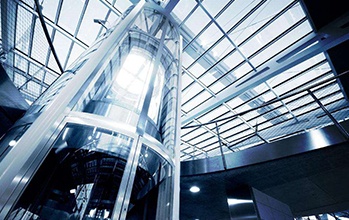Why does the elevator vibrate and vibrate when it is running (1)
As an indispensable modern transportation equipment, elevators are very important for safety and comfort. In the operation of the elevator, the phenomenon of jitter and vibration that is often visible is also a problem that cannot be ignored.

1. The shaking caused by the elevator car or the counterweight guide rail. If the main and auxiliary guide rails of the elevator are not installed vertically or are used for a long time, the rail surface will be worn and deformed and the joints of the guide rails will be misaligned. Such long-term operation can cause the car to produce jitter and noise.
2. When the guide rail bracket is loose or the rail pressing screw is loose, the guide rail will be aggravated during the operation of the elevator, and the requirements will not meet the standards, resulting in the phenomenon of elevator shaking.
3. The upper and lower errors of the gauge in the whole process are relatively large. When the standard requirements are not met, the horizontal shaking of the elevator will increase during the operation.
4. If the connection fixing bolts of the traction machine are loose or the shock-absorbing ring falls off, the fixing bolts will be loosened, so that the elevator moves during operation, which will cause the car to vibrate and vibrate; one shock-absorbing rubber ring falls off, and the three rubber rings are in the same The main engine is supported on the plane. Under the action of the traction force of the traction machine, the elevator will periodically shake.
5. Due to improper adjustment of the gap between the guides, improper adjustment of the parallelism of the guides, and excessive or too small expansion and contraction of the guides, the elevator will shake.
6. If the compensation chain and compensation rope are incorrectly mounted on the counterweight frame or stretched too long, scratching other parts in the hoistway will cause jitter and abnormal noise.
7. When the bearing on the car top reverse sheave or the counterweight reverse sheave is worn, the elevator will have a pounding feeling when running at high speed.
8. When the elevator is running at high speed, the car has to bear a lot of force. If a part of the car frame or the car wall is not fastened properly, the part will easily produce relative displacement, which will cause the vibration of the elevator.
9. Poor stacking of parts will cause the counterweight frame to be distorted and deformed. If it is installed directly without correction, it will cause the elevator to shake or abnormal noise.
10. The dynamic balance and static balance of the elevator car are not done well. Static balance is to stop the elevator at the bottom, remove the guide shoe on the bottom of the car to see if the car is inclined; dynamic balance means that when the elevator is running, the guide shoe rubs against the surface of the guide rail, and there will be jitter or vibration during operation. Of course, when the balance coefficient is quite different, it will also cause the elevator to feel bad or shake during operation.




